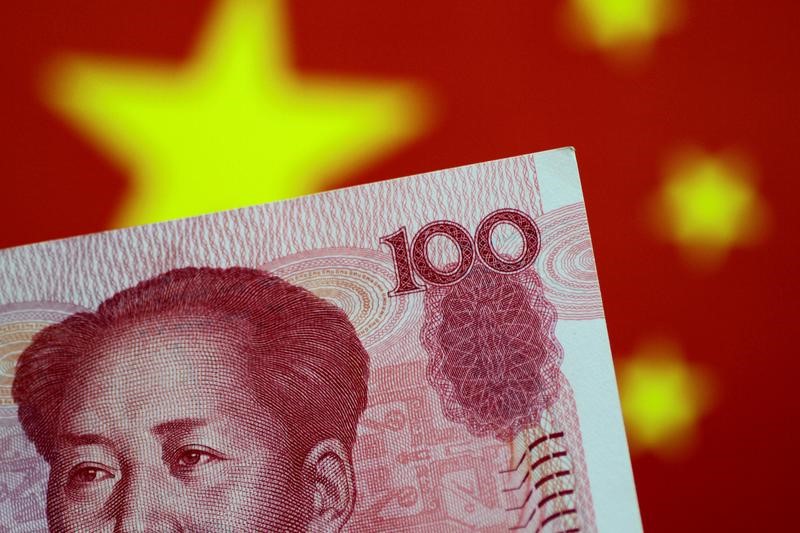By Ambar Warrick
Investing.com -- The Chinese yuan rose sharply on Wednesday as stronger-than-expected business activity data ramped up bets of an economic recovery in the country, helping most other China-exposed currencies gain for the day.
The yuan rose 0.4%, moving further away from its lowest level this year as China’s composite purchasing managers’ index hit its highest level in over a decade, supported by stronger-than-expected growth in both manufacturing and non-manufacturing activity.
The offshore yuan jumped 0.5% against the dollar, as the data indicated that an economic recovery in China gained momentum over the past month after the country relaxed most anti-COVID measures in January.
A recovery in China bodes well for broader Asian economies that trade with the country, with gains in the yuan spilling over into most other regional currencies with high trade exposure to the country.
The Taiwan dollar rose 0.3%, while the South Korean won jumped 0.5% in holiday-thinned trade. The Australian dollar rose 0.3% even as data showed the country’s economic growth slowed drastically in the fourth quarter, amid pressure from elevated inflation and interest rates.
Australian inflation also grew less than expected in January.
The Thai baht led gains across Southeast Asian currencies with a 0.8% bounce, while the Philippine peso added 0.6%.
Still, most Asian currencies were nursing steep losses for February, as concerns over rising U.S. interest rates and a hawkish Federal Reserve persisted. The dollar stuck to a near two-month high against a basket of currencies, after advancing sharply in February.
The dollar index and dollar index futures were muted on Wednesday, after logging small overnight losses on weaker-than-expected economic readings.
Focus this week is largely on U.S. PMI data for February, due on Wednesday and Friday. Any signs of resilience in the U.S. economy give the Fed more economic headroom to keep raising interest rates, which is negative for Asian markets.
Regional economic indicators were also in focus this week. The Japanese yen fell 0.1%, sticking close to its weakest level this year after data showed the country’s manufacturing PMI remained in contraction through February.
The Indian rupee rose 0.1%, as data showed that the country’s economy grew 7% in 2022, much faster than most of its Asian peers. But economic growth for the fourth quarter also slightly missed expectations.
